
Prabhashvara is the color of the aura of Gautama Buddha which was seen radiating from his body according to Buddhist traditions and is depicted on the Buddhist flag. [1]

Prabhashvara is the color of the aura of Gautama Buddha which was seen radiating from his body according to Buddhist traditions and is depicted on the Buddhist flag. [1]
Prabhashvara means "brilliant" or "shining". [2] The prabhashvara is considered be the spectrum of Buddha's aura and consists of five colors, in Pāli:
According to Purana Kassapa and Makkali Gosala, these six colors could also be interpreted a six species, races, or categories of human beings distinguished by genetic, physical, moral or psychological traits, which no individual can change or influence through his own will. The black color included butchers, hunters, fishers, thieves, and all those who practise curel deeds. The other five categories are on placed on a decreasing scale of perversity and increasing holiness. The white is for the absolutely pure, whose holinness is innate. However, Gautama Buddha opposed this racist classification as according to his teaching, men should not be judged by their birth but rather by their own deeds. [3]
The mixture of those five colors is believed to be Prabhashvara but it is depicted as separate strips of the five colors.
The flag was originally designed in 1885 by the Colombo Committee, in Colombo, Ceylon, in modern day Sri Lanka. The prabashvara was suggested by Henry Steel Olcott to give the Buddhist flag a strong identity more than two thousand years after Buddha's "parinirvana" to represent the Buddhism as a religion. [4]

Siddhartha Gautama, most commonly referred to as the Buddha, was a wandering ascetic and religious teacher who lived in South Asia, during the 6th or 5th century BCE and founded Buddhism. According to Buddhist legends, he was born in Lumbini, in what is now Nepal, to royal parents of the Shakya clan, but renounced his home life to live as a wandering ascetic. After leading a life of mendicancy, asceticism, and meditation, he attained nirvana at Bodh Gaya in what is now India. The Buddha then wandered through the lower Indo-Gangetic Plain, teaching and building a monastic order. Buddhist tradition holds he died in Kushinagar and reached parinirvana.

Amitābha, also known as Amita Buddha or Amida Buddha, is the principal Buddha of Pure Land Buddhism. He is also known as Amitāyus, which is understood to be his enjoyment body (Saṃbhogakāya). In Vajrayana Buddhism, Amitābha is known for his longevity, discernment, pure perception, and the purification of aggregates with deep awareness of the emptiness of all phenomena. Amitābha is associated with the Diamond Realm (vajradhātu), whereas Amitāyus is associated with the Womb Realm (garbhakoṣadhātu).

In Buddhism, Buddha is a title for those who are spiritually awake or enlightened, and have thus attained the supreme goal of Buddhism, variously described as nirvana, bodhi, and liberation. A Buddha is also someone who fully understands the Dharma, the true nature of all things or phenomena (dharmas), the ultimate truth. Buddhahood is the condition and state of a buddha. This highest spiritual state of being is also termed sammā-sambodhi and is interpreted in many different ways across schools of Buddhism.
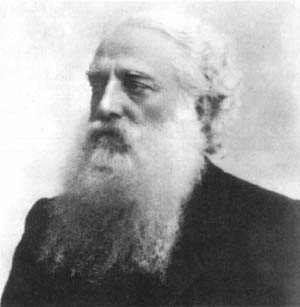
Colonel Henry Steel Olcott was an American military officer, journalist, lawyer, Freemason and the co-founder and first president of the Theosophical Society.
Maitreya (Sanskrit) or Metteyya (Pali), is a bodhisattva who is regarded as the future Buddha of this world in all schools of Buddhism, prophesied to become Maitreya Buddha or Metteyya Buddha. In some Buddhist literature, such as the Amitabha Sutra and the Lotus Sutra, he is also referred to as Ajitā. In Tibetan Buddhism he is known as the "Lord of Love" or the "Noble Loving One". The root of his name is the Sanskrit word maitrī. The name Maitreya is also related to the Indo-Iranian name Mitra. In Hinduism, Maitreya is prophesied to be the king of Shambala, which is also the birthplace of the Kalki Avatar.

Buddhist symbolism is the use of symbols to represent certain aspects of the Buddha's Dharma (teaching). Early Buddhist symbols which remain important today include the Dharma wheel, the Indian lotus, the three jewels and the Bodhi tree.
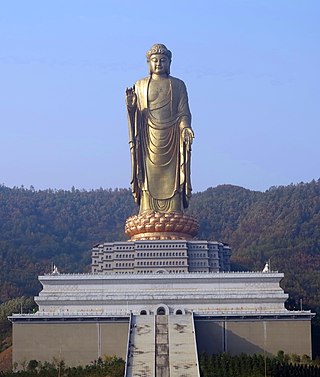
Vairocana, also known as Mahāvairocana, is a major Buddha from Mahayana and Vajrayana Buddhism. Vairocana is often interpreted, in texts like the Avatamsaka Sutra, as the Dharmakāya of the historical Gautama Buddha.
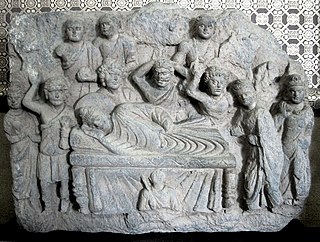
In Buddhism, parinirvana describes the state entered after death by someone who has attained nirvana during their lifetime. It implies a release from Saṃsāra, karma and rebirth as well as the dissolution of the skandhas.

Anagārika Dharmapāla was a Sri Lankan Buddhist revivalist and a writer.

Much Buddhist art uses depictions of the historical Buddha, Gautama Buddha, which are known as Buddharūpa in Sanskrit and Pali. These may be statues or other images such as paintings. The main figure in an image may be someone else who has obtained Buddhahood, or a boddhisattva, especially in the various traditions of Mahayana Buddhism. Other Buddhas and bodhisattvas in art have become increasingly common over the centuries, perhaps now outnumbering images of the historical Buddha.

Mahākāśyapa was one of the principal disciples of Gautama Buddha. He is regarded in Buddhism as an enlightened disciple, being foremost in ascetic practice. Mahākāśyapa assumed leadership of the monastic community following the parinirvāṇa (death) of the Buddha, presiding over the First Buddhist Council. He was considered to be the first patriarch in a number of Early Buddhist schools and continued to have an important role as patriarch in the Chan/Zen tradition. In Buddhist texts, he assumed many identities, that of a renunciant saint, a lawgiver, an anti-establishment figure, but also a "guarantor of future justice" in the time of Maitreya, the future Buddha—he has been described as "both the anchorite and the friend of mankind, even of the outcast".

The Buddhist flag is a flag designed in the late 19th century as a universal symbol of Buddhism. The flag's six vertical bands represent the five colors of the aura which Buddhists believe emanated from the body of the Buddha when he attained enlightenment.

Theosophical teachings have borrowed some concepts and terms from Buddhism. Some theosophists like Helena Blavatsky, Helena Roerich and Henry Steel Olcott also became Buddhists. Henry Steel Olcott helped shape the design of the Buddhist flag. Tibetan Buddhism was popularised in the West at first mainly by Theosophists including Evans-Wentz and Alexandra David-Neel.

The Buddha is considered the ninth avatar among the ten major avatars of the god Vishnu, according to the Vaishnava tradition of Hinduism.
Luminous mind is a Buddhist term which appears only rarely in the Pali Canon, but is common in the Mahayana sūtras and central to the Buddhist tantras. It is variously translated as "brightly shining mind", or "mind of clear light" while the related term luminosity is also translated as "clear light" or "luminosity" in Tibetan Buddhist contexts or, "purity" in East Asian contexts.

Buddhism is a religion and philosophy encompassing a variety of traditions, beliefs and practices, largely based on teachings attributed to Siddhartha Gautama, commonly known as the Buddha, "the awakened one".

The Fo Guang Shan Buddha Museum, formerly known as the Buddha Memorial Center, is a Mahāyāna Buddhist cultural, religious, and educational museum located in Dashu District, Kaohsiung, Taiwan. The museum is affiliated with Fo Guang Shan, one of Taiwan's largest Buddhist organizations. The museum is located next to the Fo Guang Shan Monastery, the headquarters of the order. The museum houses one of the tooth relics of Sakyamuni Buddha, the founder of the Buddhist faith. The museum was accepted as the youngest member of the International Council of Museums (ICOM) in 2014.
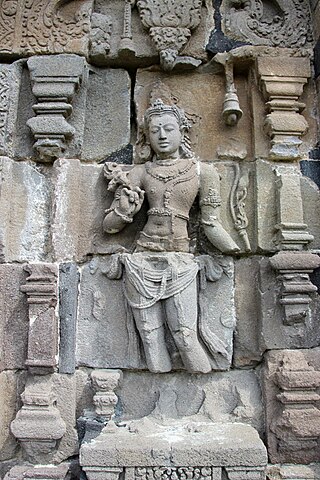
The many different varieties of Buddhist art often show buddhas and bodhisattvas, as well as depictions of the historical Buddha, known as Gautama Buddha.
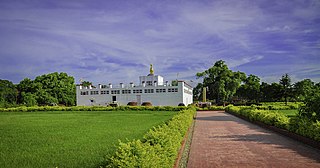
Maya Devi Temple is an ancient Buddhist temple situated at the UNESCO World Heritage Site of Lumbini, Nepal. It is the main temple at Lumbini, a site traditionally considered the birthplace of Gautama Buddha. The temple stands adjacent to a sacred pool and a sacred garden. The archaeological remains at the site were previously dated to the third-century BCE brick buildings constructed by Ashoka. A sixth-century BCE timber shrine was discovered in 2013.
Classes of Tantra in Tibetan Buddhism refers to the categorization of Buddhist tantric scriptures in Indo-Tibetan Buddhism. Tibetan Buddhism inherited numerous tantras and forms of tantric practice from medieval Indian Buddhist Tantra. There were various ways of categorizing these tantras in India. In Tibet, the Sarma schools categorize tantric scriptures into four classes, while the Nyingma (Ancients) school use six classes of tantra.